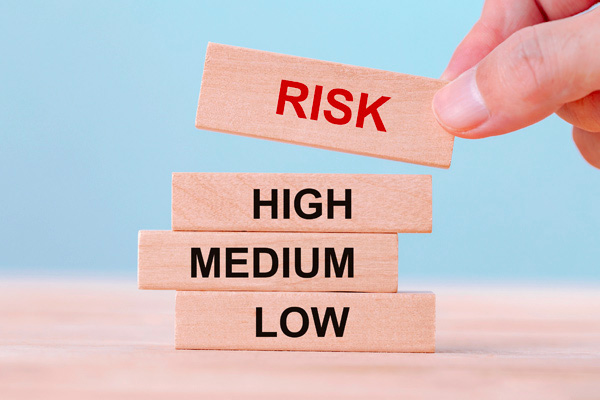How risky is investing?
Almost by definition, investing involves some element of risk.
16th January 2021 08:07
by Kyle Caldwell from interactive investor
Almost by definition, investing involves some element of risk. If there was no possibility of losing some (or all!) of your money, there would be no possibility of achieving a return greater than what you can get from a savings account. However, this is not a reason to shy away from investing.

The first thing to know is what is meant by risk. The most obvious definition of risk for investors is losing their money invested.
This can happen if they invest in bonds that are defaulted on, meaning the issuer of the bond stops paying interest or cannot pay back the original amount borrowed.
When it comes to shares, the risk is that the share price of a company significantly falls below the purchase price. This can either be due to specific issues with the company or reflective of a worse economic outlook. In the worst cases, the shares can become worthless.
However, there are other ways to think of risk in finance. Academic finance is keen on defining risk as “volatility”. In the simplest terms this means how much the price fluctuates over a given period.
Another way to think of risk is as so-called “opportunity cost”. What this means is that the risk of investing in company A is not that it will necessarily lose you money but that it will provide a lower return than company B.
Which investments are most risky?
Generally, bonds are seen as less risky than equities. Bonds are a promise to pay you a fixed amount after a certain period of time, with a fixed interest rate paid at fixed intervals over that period.
Equities have no such guarantees. The stocks you buy may pay a dividend when you buy them, but that could be cut or scrapped altogether. Likewise, you are not guaranteed to receive the same or more of the amount of money you invested in shares – it entirely depends on what the share price level is when you decide to sell.
As a result of being less risky than equities, bonds usually provide lower returns. This is often described as the “equity risk premium”, meaning investors require a higher return to take the risk of holding shares.
Therefore, generally, equities provide a higher return. As a result, if you did only invest in bonds, you would face the third risk mentioned above: opportunity cost. Over 10 or 20 years, your returns may be significantly lower if you stick only with the “less risky” option of bonds.
Not all bonds or stocks created equal
Within this neat distinction between stocks and bonds, however, there is an added layer of complexity. Not all stocks and bonds are as risky as each other and indeed some bonds can even be seen as riskier than some equities.
For example, the safest investments are generally seen as bonds issued by reliable governments such as the United States, the UK or Germany. As you would expect, these ultra-safe bonds provide very low returns.
However, bond funds (managed by a professional investor) can opt for the slightly riskier option of corporate bonds (those issued by companies). For big, established companies the returns will be quite small, reflecting the market’s perception of these companies as reliable and therefore safe investments. However, bond funds can move along the risk scale and opt for less reliable companies. These are companies whose bonds will pay higher interest due to the greater risk they will default – meaning they will stop paying their debts. The riskier they are seen to be, the higher the potential return.
When it comes to equities, big established companies are also seen as less risky. Think of a start-up versus a respected household name company selling branded items that consumers loyally buy. The latter will likely not provide a huge return. Meanwhile, the start-up may lose all your money in the likely event it goes bust - or it provides ultra-high returns if it turns out to be the next Google or Amazon.
Risk for equities is also seen as differing across regions. Equities in developed markets are generally seen as less risky than those in emerging markets. Companies in emerging markets have all sorts of risk that can make their failure more likely: poor governance, currency fluctuations and less stable economies.
Diversification is the key
One way to best ways reduce risk is to ensure your portfolio is well-diversified by investing in both stocks and bonds (with a higher percentage weighting to stocks depending on how much risk you want to take). The split between the two will depend on your age, aims and “risk appetite”.
Keep in mind that no single holding (whether you buy a share, fund, investment or exchange-traded fund (ETF) should take up too much of your portfolio. Having a spread of investments reduces risk.
These articles are provided for information purposes only. Occasionally, an opinion about whether to buy or sell a specific investment may be provided by third parties. The content is not intended to be a personal recommendation to buy or sell any financial instrument or product, or to adopt any investment strategy as it is not provided based on an assessment of your investing knowledge and experience, your financial situation or your investment objectives. The value of your investments, and the income derived from them, may go down as well as up. You may not get back all the money that you invest. The investments referred to in this article may not be suitable for all investors, and if in doubt, an investor should seek advice from a qualified investment adviser.
Full performance can be found on the company or index summary page on the interactive investor website. Simply click on the company's or index name highlighted in the article.